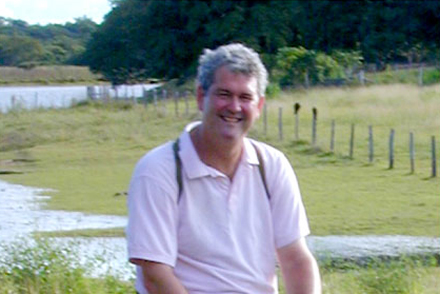
Robin Murphy
American group The Conservation Fund, which combines protecting forests and creating jobs in partnership with business, offers a model that Australia could follow. By Philip Hopkins for Timberbiz
That was the key message of the Vice-President of The Conservation Fund, Robin Murphy, in a speech last month in Canberra. He was addressing the Federal Parliament’s Parliamentary Friends of Forest and Forest Products dinner.
Mr Murphy said the Fund was created in the 1980s by Patrick Noonan, who wanted to create a small, nimble and independent entrepreneurial group.
“Pat’s instinct was to harness the power of markets and the discipline of business practices and adapt them to advanced conservation,” he said.
Mr Murphy said partnerships with forest products companies had led to the Fund protecting vast and ecologically important tracts of forests in America.
America’s forests fell into two groups. The first was about 3.1 million square kilometres of US forests, many publicly owned, such as the national and state forests.
“These protected lands are managed for a variety of uses, including public recreation and wildlife habitat,” he said.
“The other, lesser known types of forest are private-owned working forests. These comprise more than half the forests in our country – about 1.7 million square kilometres – and are critical to our economy and ecosystems.”
They provided timber for construction, pulp and fibre for paper and packaging, and “thousands of products that we need to live, work and play”.
In 1998, Mr Murphy said an early achievement of the Fund was to buy a forest owned by Champion International – 120,000 hectares across the states of New York, Vermont and New Hampshire. “For reference, the City of Canberra is 81,000 hectares,” he said.
Seventy per cent of the land was kept as a working forest and the remaining 30 per cent put in public ownership. Conservation easements limited further subdivision to ensure long-term protection of the local forest industry.
Mr Murphy said at the same time, the Fund responded to a big shift in the economics of the US timber industry. A variety of factors, including real estate pressures and tax changes, were forcing forestland owners to place their land in more tax-efficient structures or sell their land for needed cash.
“Timberland thus became a financial asset class … without regard to their essential value as ecosystems,” he said. Over the past two decades, vertically integrated companies that made pulp, paper and solid wood products sold off about 365,000 square kilometres of timberlands.
The new owners were timber investment management organisations (TIMOs), which often buy forests to maximise returns for institutional clients.
Mr Murphy said the Fund, facing the possible destruction of ecosystems and local forest economies, “rolled up its sleeves and got to work”, buying more forests, which in 2009 evolved to a coherent program – the Working Forest Fund.
This fund invested directly in economically and environmentally important forests in all key forestland geographies.
Mr Murphy said the Fund’s team approach consisted of the following:
*A sustainable management plan, with focus on wildlife habitat, carbon dioxide sequestration, water quality and asset value.
*Certification, either through the Forest Stewardship Council or the Sustainable Forestry initiative.
*Raise funds for an easement on the property, through a private land trust or a public agency, to ensure the property remains a protected, sustainable working forest.
*After 3-7 years, return the forestland to private or public ownership, ensuring it remains a protected working forest.
*Revenue from protected forests re-invested in other working forests, creating an expanding network of permanently protected, privately-owned working forests.
Mr Murphy said to date, the Fund had protected more than 200,000 hectares of working forests in 31 projects. This process had protected habitat for more than 82 rare animals, including 17 endangered and threatened species; more than 52 million tonnes of CO2 had been taken from atmosphere; and 3800 timber jobs created with $452 million in timber sales.
Business had been absent until a 2015 partnership with Apple, which aimed to protect or restore working forest to make paper in its product packaging.
Mr Murphy said with partnerships in America and China, yearly production from Apple’s projects was now greater than the amount of virgin fibre used in Apple’s product packaging.
“And we’ve already seen other major companies who have stepped up to follow Apple’s lead. Dell, Disney, UPS and more are investing in protecting working forests to meet business needs,” he said.
Working forests supported 2.8 million jobs, contributing $120 billion to America’s gross domestic product. “They are the environment equivalent of the working farm, embedded in the fabric of our national identity,” he said.
Mr Murphy said US forests stored 192 million metric tons of carbon per year. “Two mature trees provide enough oxygen for one person to breathe over a year,” he said.





